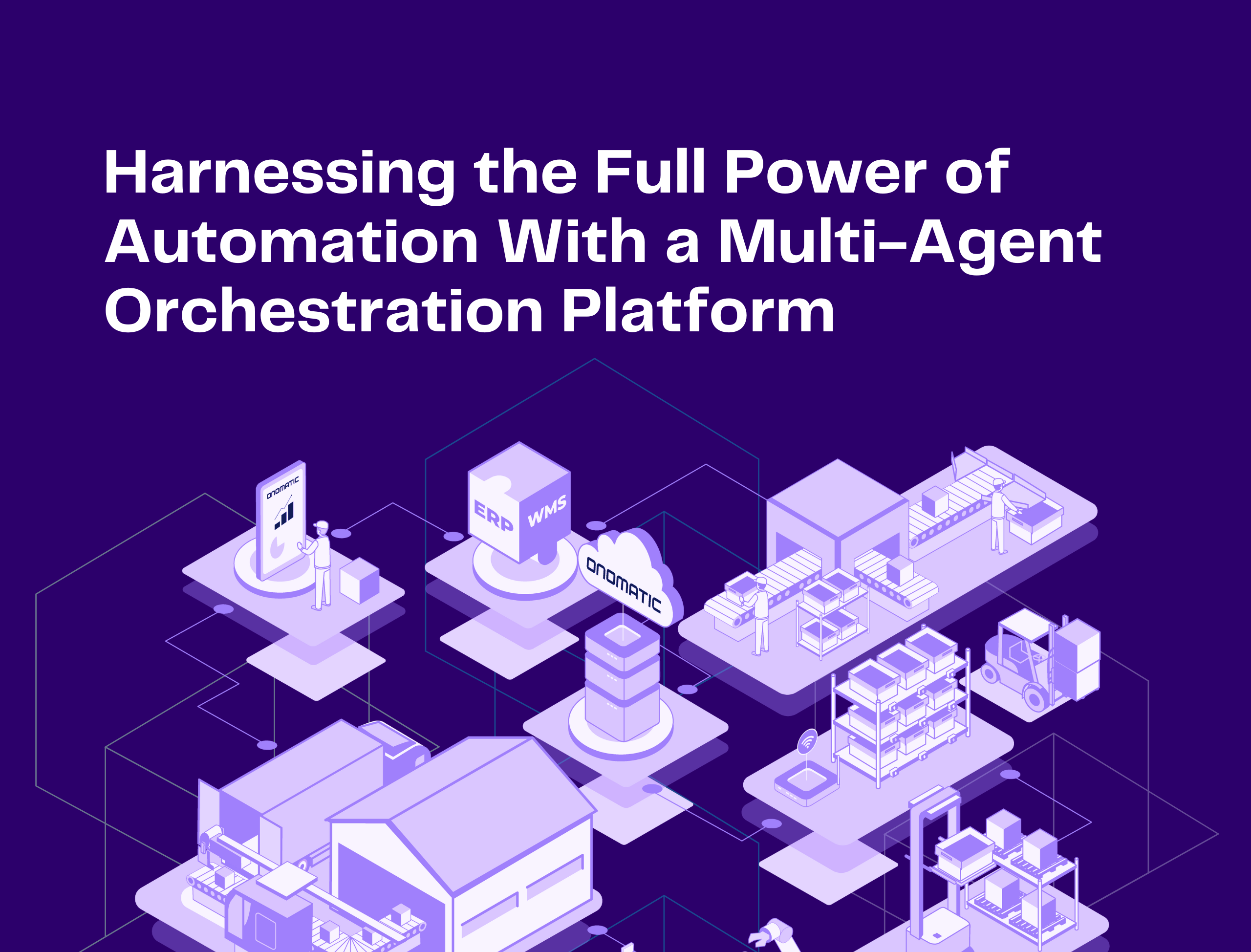By: Lori Kesten
May 9, 2025 | 3 min read
Beyond the WMS: Multi-Agent Orchestration Platforms
For decades, companies using Warehouse Management Systems (WMS) relied on a function called “waves” to group orders and release them in planned batches based on throughput capacity, human resource availability, and timing. This structured approach was a practical response to ensure physical limitations like pack stations, dock doors, staging areas, and human labor, were not overwhelmed. Wave planners would carefully time the priority and release of orders to avoid bottlenecks and help maintain a steady flow of work on the warehouse floor.
But today’s warehouses are no longer predominantly human-centric environments, they’ve evolved into complex intralogistics operations made up of a growing variety of automation solutions such as:
| Material Handling Transport Systems | Automated Guided Vehicles (AGVs) |
| Autonomous Mobile Robots (AMRs) | Robotic Picking & Packing |
| Automated Storage & Retrieval Systems (ASRS) | Automated Packaging & Labeling |
| Pick and Put Light Systems | Scanning, Sensing & Vision Systems |
A traditional WMS was built to manage human labor through rules-based task assignments. It was not designed to interpret data from diverse types of automation equipment or to dynamically optimize the movement of goods through today’s complex landscape of automated systems.
Enter the Multi-Agent Orchestration Platform (MAOP)
A Multi-Agent Orchestration Platform (nicknamed the Maestro) represents a new category of software purpose-built for today’s hybrid warehouse environments. It serves as the coordination layer that brings humans and all forms of automation into seamless collaboration. Unlike traditional WMS-driven models that depend on rules-based handoffs between people and machines, the MAOP delivers real-time, continuous orchestration—dynamically adjusting to upstream changes and constraints while optimizing task flow across the entire operation.
While WMS platforms remain foundational to warehouse operations, they were designed for a different era—one focused on planning, not reacting. Their architecture lacks flexibility for real-time responsiveness at the automation task level. That’s where Onomatic, a MAOP, comes in: working with the WMS by bridging the gap using dynamic, constraints-based coordination across all systems, equipment, including people directed by a system or interacting with directly with the platform.
A New Layer for Real-Time Orchestration
MAOP introduces a data-driven intelligence layer between the WMS and all warehouse assets—material handling equipment (MHE), robotics, and labor planning tools. Acting as a real-time control tower, the MAOP constantly evaluates operational data and re-optimizes task execution based on shifting floor conditions.
Its core pillars—Integrate | Orchestrate | Execute | Control ensures agility, optimal throughput, and a continuous flow of work and goods through the operation.
With an MAOP in place, adding new automation becomes significantly more efficient than working without this type of platform (a foundation) in place. Thanks to pre-built integrations with an evolving array of automation systems and workflows that can be quickly adapted or extended to include new technology, the time-to-benefit is reduced.
Why the Multi-Agent Orchestration Platform Thrives in Complexity
While WMS waves were designed to prevent chaos through structured planning, the MAOP is engineered to embrace complexity. By leveraging real-time data from all systems, it makes decisions at millisecond speed—rerouting tasks, reallocating resources, and adjusting priorities dynamically.
In traditional WMS environments, wave planners must regularly evaluate floor conditions to decide when to release additional work. In contrast, a warehouse that also uses a MAOP can fully automate this process—releasing orders dynamically and intelligently. This eliminates manual processes, helping the operation avoid congestion, reduce downtime, and prevent delays—all systematically and without disruption.
What “Waveless” Really Means
Waveless execution isn’t just a work scheduling tweak; it’s a fundamental shift in how warehouse operations are managed. In a waveless model, work doesn’t start and stop in batches, instead, it flows continuously, self-adjusting in real time across automation equipment and people.
This shift is already well underway: Amazon abandoned the use of waves years ago in favor of a “never pass a pick” strategy. This continuous order flow processing gave them faster order fulfillment and better resource utilization. But the goal isn’t to mimic Amazon, every operation is different, the real opportunity lies in adopting systems that enable that same level of agility and responsiveness.
Time to Go with the Flow
Waves aren’t dying because they failed—they were fit for their time. We are experiencing a rapid pace of automation adoption and the demand for a shorter time-to-benefit cycle related. Modern intralogistics and the evolving role of human workers call for systems that can react and adapt in real time, orchestrating tasks across every workflow of the operation.
The Bottom Line
If you’re still relying on your WMS to orchestrate automation equipment in collaboration with humans, you’re already falling behind. The future of warehouse and distribution automation will rely on MAOPs—intelligent, adaptive systems that treat automation as a dynamic network to be continuously optimized. Warehouses run on automation, automation runs on Onomatic.
Want to learn how a Multi-Agent Orchestration Platform can transform your warehouse operations? Reach out to Lori Kesten to explore how Onomatic can help your team move beyond the limits of traditional WMS.

